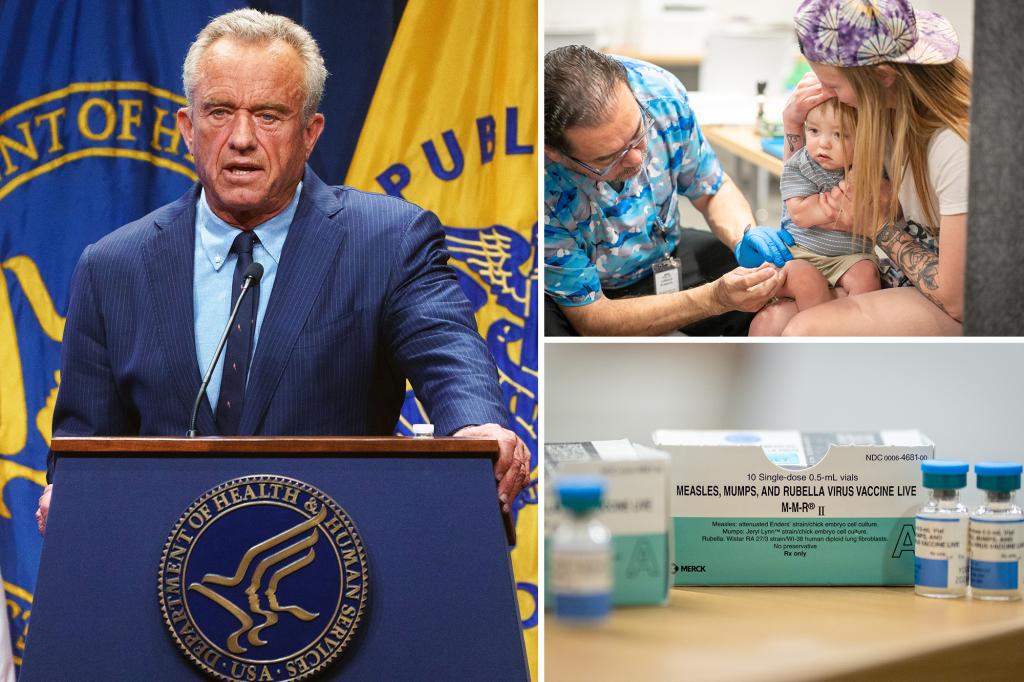Unraveling the Connection: RFK Jr. Advocates for HHS Study on Autism’s Environmental Links
Robert F. Kennedy Jr., environmental activist and chairman of the Children’s Health Defense, is urging the U.S. Department of Health and Human Services (HHS) to launch a comprehensive study examining six environmental factors potentially linked to autism spectrum disorder (ASD). The proposed research aims to identify preventable risk factors, inform public health policies, and address growing concerns about the disorder’s rising prevalence. Kennedy’s initiative, announced this week, has reignited debates about the interplay between genetics and environmental triggers in developmental disorders.
The Six Environmental Factors Under Scrutiny
Kennedy’s proposal highlights six key areas for investigation, each backed by preliminary research suggesting possible correlations with autism:
- Pesticide exposure: Studies link agricultural chemicals like chlorpyrifos to neurodevelopmental delays.
- Air pollution: Particulate matter and heavy metals may cross the blood-brain barrier.
- Plasticizers: Endocrine-disrupting phthalates in consumer products could affect fetal development.
- Heavy metals: Mercury, lead, and aluminum exposure during critical developmental windows.
- Electromagnetic fields (EMFs): Emerging research on wireless radiation’s biological effects.
- Vaccine adjuvants: Controversial aluminum compounds used to stimulate immune response.
According to CDC data, autism prevalence has climbed from 1 in 150 children in 2000 to 1 in 36 today—a trend that genetics alone cannot explain. “When you see a curve that steep, environmental factors must be part of the equation,” said Dr. Martha Herbert, a pediatric neurologist at Harvard Medical School. “We’re looking at gene-environment interactions where toxins may tip vulnerable populations toward neurodevelopmental differences.”
The Science Behind Environmental Triggers
Recent studies underscore potential mechanisms linking environmental exposures to ASD:
- A 2022 Environmental Health Perspectives study found children exposed to high pesticide levels had 50% greater ASD risk.
- Johns Hopkins researchers identified air pollution particles in placental tissue, suggesting fetal exposure pathways.
- Epigenetic research demonstrates how toxins can alter gene expression without changing DNA sequences.
However, the National Institute of Environmental Health Sciences cautions that correlation doesn’t equal causation. “While these associations are compelling, we need longitudinal studies controlling for genetic predisposition,” said NIEHS Director Dr. Rick Woychik. “That’s precisely why systematic federal research is essential.”
Controversies and Counter Perspectives
Kennedy’s inclusion of vaccine adjuvants—a topic he’s previously criticized for promoting “anti-vaccine” views—has drawn sharp reactions. The American Academy of Pediatrics maintains that over 40 studies have found no vaccine-ASD link. “Revisiting settled science diverts resources from promising new research avenues,” argued Dr. Paul Offit, vaccine developer at Children’s Hospital of Philadelphia.
Yet some autism advocates support broader investigation. “Families deserve answers about why autism clusters occur near industrial sites or after chemical spills,” said Lisa Ackerman, executive director of TACA (Talk About Curing Autism). She cites 10 peer-reviewed studies showing higher ASD rates in urban areas with elevated pollution levels.
Policy Implications and Next Steps
If adopted, the HHS study could:
- Establish new safety thresholds for prenatal chemical exposures
- Inform urban planning decisions around schools and playgrounds
- Guide pediatricians on risk mitigation strategies for at-risk families
The Biden administration has not yet responded to Kennedy’s proposal. However, HHS recently allocated $100 million to autism research through the Autism CARES Act, potentially creating a pathway for environmental studies.
For parents like Javier Soto, whose son developed ASD after living near a pesticide-treated farm, the research can’t come soon enough. “If we’d known these risks, we might have moved sooner,” he said. “Other families should have that chance.”
The Road Ahead for Autism Research
Experts agree that unraveling autism’s environmental components requires:
- Standardized exposure tracking via biomarkers
- Multi-generational cohort studies
- Collaboration between toxicologists, geneticists, and neurologists
As the scientific community weighs in, Kennedy’s proposal has undeniably shifted the conversation. “This isn’t about assigning blame,” emphasized Dr. Herbert. “It’s about creating prevention opportunities that could help future generations.”
Parents and researchers alike can stay informed by following updates from the Interagency Autism Coordinating Committee, which publishes annual research priorities. With autism diagnoses continuing to rise, the quest for answers has never been more urgent.
See more WebMD Network



